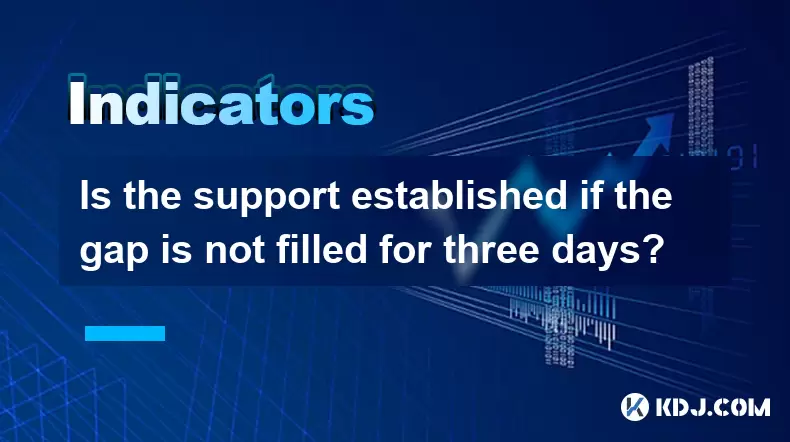-
 Bitcoin
Bitcoin $117600
-0.94% -
 Ethereum
Ethereum $3567
4.03% -
 XRP
XRP $3.422
5.29% -
 Tether USDt
Tether USDt $1.001
0.05% -
 BNB
BNB $741.2
2.18% -
 Solana
Solana $177.2
1.33% -
 USDC
USDC $0.9998
-0.01% -
 Dogecoin
Dogecoin $0.2432
13.70% -
 TRON
TRON $0.3277
3.88% -
 Cardano
Cardano $0.8322
3.44% -
 Hyperliquid
Hyperliquid $44.93
-3.85% -
 Stellar
Stellar $0.4712
0.77% -
 Sui
Sui $3.866
-3.70% -
 Chainlink
Chainlink $18.07
5.32% -
 Hedera
Hedera $0.2688
9.36% -
 Bitcoin Cash
Bitcoin Cash $515.8
3.87% -
 Avalanche
Avalanche $23.95
4.68% -
 Shiba Inu
Shiba Inu $0.00001493
3.69% -
 UNUS SED LEO
UNUS SED LEO $8.921
0.92% -
 Toncoin
Toncoin $3.235
0.73% -
 Litecoin
Litecoin $104.5
3.15% -
 Polkadot
Polkadot $4.335
2.58% -
 Uniswap
Uniswap $10.29
14.69% -
 Monero
Monero $330.8
-2.86% -
 Bitget Token
Bitget Token $4.904
2.83% -
 Ethena USDe
Ethena USDe $1.001
0.09% -
 Pepe
Pepe $0.00001336
-2.18% -
 Dai
Dai $0.9999
0.01% -
 Aave
Aave $320.5
-1.28% -
 Cronos
Cronos $0.1189
6.16%
Is the support established if the gap is not filled for three days?
In crypto trading, unfilled gaps may signal support or resistance, but they require confirmation from volume, candlestick patterns, and market context to be reliable.
Jun 29, 2025 at 06:50 pm

Understanding Gaps in Cryptocurrency Trading
In cryptocurrency trading, gaps refer to the price differences between the closing price of one trading session and the opening price of the next. These gaps often occur due to market sentiment shifts, news events, or significant changes in demand and supply over non-trading hours. In traditional markets, gaps are relatively rare due to continuous trading, but in the crypto space, where trading never stops, gaps can still appear on daily or weekly charts, especially when viewed from a specific exchange's perspective.
When traders talk about a gap not being filled for three days, they're referring to a scenario where the price does not return to the level of the gap within that timeframe. This raises questions about whether such an unfilled gap creates a new support or resistance level.
Important: A gap is not automatically a support or resistance just because it remains unfilled for three days.
How Do Gaps Form in Crypto Charts?
Gaps in crypto charts form when there’s a sudden surge or drop in price with no trading activity in between. For example, if Bitcoin closes at $60,000 and opens the next day at $61,000, a gap-up occurs. Conversely, if it opens at $59,000, a gap-down is formed.
- Gap-Up: Occurs when the opening price is higher than the previous close.
- Gap-Down: Happens when the opening price is lower than the previous close.
These gaps may appear more frequently on daily or weekly timeframes. The lack of liquidity or rapid price movement during off-peak hours often causes these gaps.
Why Does the Three-Day Rule Matter?
The idea that a gap not filled within three days becomes a support or resistance level is derived from classical technical analysis used in stock trading. However, this rule doesn't always apply directly to cryptocurrency markets due to their 24/7 nature and high volatility.
Traders sometimes believe that if the price does not return to fill a gap within three calendar days, it indicates strong momentum in the direction of the gap. That belief leads some to treat the gap area as a potential support (in case of a gap-up) or resistance (in case of a gap-down).
However, this should not be taken as a universal truth. It depends heavily on:
- Market sentiment
- Volume around the gap area
- Broader trend context
Steps to Analyze If a Gap Becomes Support
To determine whether a gap that has remained unfilled for three days can act as support, follow these steps:
- Identify the exact price range of the gap on your chart. Zoom in if necessary.
- Check how many times the price revisited the gap zone after it formed.
- Observe volume patterns near the gap area. Higher volume on retests increases the chance of valid support.
- Look for candlestick patterns like bullish engulfing or hammer candles near the gap zone.
- Compare with other technical indicators like moving averages or RSI to confirm strength.
If the price bounces from the gap multiple times without breaking below it, then it might be forming a support level.
Common Misconceptions About Gaps and Supports
Many traders fall into the trap of assuming that any unfilled gap will eventually become a support or resistance. This is not accurate in the crypto market. Here are some common misconceptions:
- Believing every gap must be filled: Some gaps remain unfilled for months or even years.
- Assuming gaps create instant support: Without volume or repeated tests, a gap isn’t meaningful.
- Ignoring broader market conditions: Even if a gap looks promising, a bearish trend could erase its significance.
It's essential to approach gaps with caution and validate them using other tools before treating them as reliable support zones.
Frequently Asked Questions
Q: Can gaps be used as standalone signals for entering trades?
No, gaps alone should not be used as primary trade signals. They should be combined with volume analysis, candlestick confirmation, and trend context.
Q: How long should I wait before considering a gap as support?
There's no fixed rule. While some traders use the three-day window, others wait for multiple touches or volume validation. Timeframe also plays a role — what works on a daily chart may not work on a 4-hour chart.
Q: What types of gaps are most reliable for support/resistance?
Breakaway gaps, which signal the start of a new trend, tend to be more reliable than exhaustion or common gaps. These usually come with a surge in volume and strong price action.
Q: Are gaps more significant in certain cryptocurrencies?
Yes. Gaps in less liquid altcoins can be misleading due to thin order books. Bitcoin and Ethereum gaps tend to carry more weight due to their larger market size and deeper liquidity.
Disclaimer:info@kdj.com
The information provided is not trading advice. kdj.com does not assume any responsibility for any investments made based on the information provided in this article. Cryptocurrencies are highly volatile and it is highly recommended that you invest with caution after thorough research!
If you believe that the content used on this website infringes your copyright, please contact us immediately (info@kdj.com) and we will delete it promptly.
- Giants Protocol's G Token Live Launch: What You Need to Know
- 2025-07-18 21:30:13
- Solana, Rollblock, and the Gaming Token Revolution: What's Hot Now?
- 2025-07-18 22:10:13
- Crypto 2025: Will the Bull Run Be Led by Ethereum?
- 2025-07-18 22:10:13
- XRP, Dogecoin, and Crypto Bills: What's Shaking in the Crypto World?
- 2025-07-18 20:50:13
- Trump, Family Business, and Power: A New Era of Conflicts?
- 2025-07-18 20:30:12
- Trump, Business, & Bitcoin: A Crypto Capitalist's Vision
- 2025-07-18 20:40:12
Related knowledge

Advanced RSI strategies for crypto
Jul 13,2025 at 11:01am
Understanding the Basics of RSI in Cryptocurrency TradingThe Relative Strength Index (RSI) is a momentum oscillator used to measure the speed and chan...

Crypto RSI for day trading
Jul 12,2025 at 11:14am
Understanding RSI in the Context of Cryptocurrency TradingThe Relative Strength Index (RSI) is a momentum oscillator used to measure the speed and cha...

Crypto RSI for scalping
Jul 12,2025 at 11:00pm
Understanding RSI in the Context of Crypto TradingThe Relative Strength Index (RSI) is a momentum oscillator widely used by traders to measure the spe...

What does an RSI of 30 mean in crypto
Jul 15,2025 at 07:07pm
Understanding RSI in Cryptocurrency TradingRelative Strength Index (RSI) is a momentum oscillator widely used in cryptocurrency trading to measure the...

What does an RSI of 70 mean in crypto
Jul 13,2025 at 06:07pm
Understanding the RSI Indicator in Cryptocurrency TradingThe Relative Strength Index (RSI) is a widely used technical analysis tool that helps traders...

Does RSI work in a bear market for crypto
Jul 16,2025 at 01:36pm
Understanding RSI in Cryptocurrency TradingThe Relative Strength Index (RSI) is a momentum oscillator used by traders to measure the speed and change ...

Advanced RSI strategies for crypto
Jul 13,2025 at 11:01am
Understanding the Basics of RSI in Cryptocurrency TradingThe Relative Strength Index (RSI) is a momentum oscillator used to measure the speed and chan...

Crypto RSI for day trading
Jul 12,2025 at 11:14am
Understanding RSI in the Context of Cryptocurrency TradingThe Relative Strength Index (RSI) is a momentum oscillator used to measure the speed and cha...

Crypto RSI for scalping
Jul 12,2025 at 11:00pm
Understanding RSI in the Context of Crypto TradingThe Relative Strength Index (RSI) is a momentum oscillator widely used by traders to measure the spe...

What does an RSI of 30 mean in crypto
Jul 15,2025 at 07:07pm
Understanding RSI in Cryptocurrency TradingRelative Strength Index (RSI) is a momentum oscillator widely used in cryptocurrency trading to measure the...

What does an RSI of 70 mean in crypto
Jul 13,2025 at 06:07pm
Understanding the RSI Indicator in Cryptocurrency TradingThe Relative Strength Index (RSI) is a widely used technical analysis tool that helps traders...

Does RSI work in a bear market for crypto
Jul 16,2025 at 01:36pm
Understanding RSI in Cryptocurrency TradingThe Relative Strength Index (RSI) is a momentum oscillator used by traders to measure the speed and change ...
See all articles

























































































